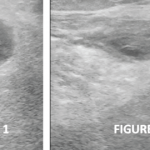Complications
Next, Dr. Sporer highlighted the “complications that keep us up at night:” periprosthetic joint infections and THA dislocations.
Periprosthetic joint infections occur in 1–2% of primary cases, with numbers rising for revisions. In addition to distress to the patient, the economic burden of periprosthetic joint infections in the U.S. is more than $1 billion per year.3
“Infections are an absolute disaster for patients, and we aren’t doing a great job of mitigating these despite new technologies,” Dr. Sporer said. “The problem is that with metal implants, the bacteria form a glycocalyx that antibiotics don’t penetrate well. These become chronic infections that are very hard to eradicate.”
Depending on co-morbidities, some patients may benefit from lifelong oral antibiotic suppression.4
Dislocation after THA is also extremely traumatic to patients and their families. But how does it happen?
“When people sit and stand, motion occurs at the pelvis and hip. Normally when you stand, your pelvis is somewhat tilted forward. When you sit, it rocks backward to cover the socket of the hip and allow it to flex,” Dr. Sporer said. “Comorbidities that cause abnormal spinopelvic mobility [e.g., ankylosing spondylitis] increase the risk of dislocation. So we have to be extra careful when it comes to patient selection.”5,6
Anti-Rheumatic Medications
As expected, immunosuppressive medications can increase total joint arthroplasty complication rates. But how long should we hold them before and after surgery?
In 2017, the ACR and the American Association of Hip and Knee Surgeons released joint guidelines for the perioperative management of antirheumatic medications for patients undergoing elective THA and TKA.7 These were updated in March 2022 to include newer therapies, as well as recommendations specific to patients with severe systemic lupus erythematosus.8
“There are very few randomized controlled trials to guide recommendations, but this document is based on expert consensus and is a good starting point. It’s great to know we can operate through conventional DMARDs, like methotrexate, without increased infection risk,” he said.
Follow-Up
Dr. Sporer closed his talk fielding questions from the audience.
Regarding frequency of follow-up after total joint arthroplasty, he said, “Historically, the weak link was the liner on the hardware. It would wear down like tires on your car, ultimately leading to osteolysis or bone resorption with severe defect. So we were advising people to come back every one to two years for evaluation. About 15 years ago, the manufacturing process for the liners changed, and wear rates lessened substantially. So we aren’t seeing the problems we saw in past. I still see everyone back every five years, but some surgeons don’t have patients follow up at all.”

